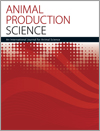Di Mayberry (CSIRO, Australia)

Animal Production Science
Volume 63 Number 4 2023
Special IssueReproductive performance of northern Australia beef herds
Di Mayberry (CSIRO, Australia)
ANv63n4_FOForeword: Reproductive performance of northern Australia beef herds
AN17494Reproductive performance of northern Australia beef herds. 1. Survey of nutritional, breeding and herd health management practices and of the environment
 , S. Jephcott, B. M. Burns, D. R. Smith, G. Fordyce
, S. Jephcott, B. M. Burns, D. R. Smith, G. Fordyce  , P. K. O'Rourke and M. R. McGowan
, P. K. O'Rourke and M. R. McGowan
A large epidemiological study known as the Cash Cow project was conducted in commercial beef breeding herds across northern Australia between 2007 and 2011 with the aim of determining and quantifying the effect of management, nutritional and environmental factors on reproductive outcomes. This paper describes results from survey questionnaires examining their nutritional, breeding and herd health management practices and policies completed by herd managers/owners of participating properties at the commencement of the study.
An observational population-based epidemiological study was conducted in commercial northern Australian beef-breeding herds to describe reproductive performance and to quantify the prevalence and impact of the major risk factors. The present paper describes the monitored reproductive performance of ~56 000 cows managed on 78 commercial beef-breeding properties in a tropical region. Reproductive performance varied markedly both within and among country types. The proportion of females weaning a calf annually was much lower in the Northern Forest than in the other country types.
A large epidemiological study known as the Cash Cow project was conducted in commercial beef breeding herds across northern Australia between 2007 and 2011, with the aim of determining and quantifying the effect of management, nutritional and environmental factors on cow performance. This paper describes the occurrence and magnitude of the factors shown to significantly affect cow performance.
AN22244 Abstract | AN22244 Full Text | AN22244PDF (2.1 MB) Open Access Article
An observational study was conducted in commercial beef breeding herds in northern Australia to determine and quantify the major associations between herd management, and nutritional, environmental and individual cow factors and measures of reproductive performance. This paper presents the findings of the study designed to determine the major predictors of lactating cows becoming pregnant within 4 months of calving.
AN17502 Abstract | AN17502 Full Text | AN17502PDF (1.8 MB) | AN17502Corrigendum (153 KB) Open Access Article
A large epidemiological study of annual pregnancy rate was conducted in commercial beef cattle breeding herds in northern Australia. The effect on non-pregnancy of the major herd management, nutritional and environmental risk factors and individual cow factors was determined and quantified. This paper presents the findings of the study designed to determine the major predictors of cows not achieving pregnancy.
AN17503 Abstract | AN17503 Full Text | AN17503PDF (1.8 MB) Open Access Article
An observational study was conducted in commercial beef breeding herds in northern Australia to determine and quantify the major associations among herd management, nutritional and environmental factors and individual cow attributes and measures of reproductive performance. This paper presents the findings of the study designed to identify risk factors associated with reproductive losses between confirmed pregnancy and weaning.
An epidemiological study was conducted in commercial beef-breeding herds in northern Australia to determine and quantify the major associations between measures of performance and risk factors for herd management, nutritional, environmental and individual cow attributes. This paper presents the findings from the study using 21 554 pregnant cows in 52 herds that determined the major risk factors associated with those that went missing. This was supported by an analysis to calculate mortality rates using contemporary statistical data for the Australian beef herd.
We examined fetal and calf loss on 31 properties from 14 171 mating outcomes in relation to baiting frequency and rainfall and found that higher losses occurred in dry and very wet years than in moderate-rainfall years, but there was no association between baiting frequency and percentage fetal and calf loss. Only limited empirical evidence was found to support the lethal control of wild dogs
AN20096Defining the primary business measure of liveweight production for beef cows in northern Australia
 , Tamsin S. Barnes, Michael R. McGowan, Nigel R. Perkins, David R. Smith and Kieren D. McCosker
, Tamsin S. Barnes, Michael R. McGowan, Nigel R. Perkins, David R. Smith and Kieren D. McCosker 
Annual liveweight production of cows in north Australian beef-breeding businesses, which along with value per kg constitutes business income, has not been well defined. Liveweight production over the life of 2122 tropically adapted cows grazing four primary country types was highly variable, being limited by available nutrition, and increased to maturity, whereas efficiency remained constant. Relative to cows weaning calves, the loss of a conceptus or weaner had a larger negative impact on liveweight production than failure to conceive.
AN20342Australian cattle herd: a new perspective on structure, performance and production
Australian cattle herd structure, performance and production measures, mostly derived from survey data, may be precise but lack accuracy. Using a herd model that reconciled beef and dairy herd performance against 1976–2018 slaughter and live export statistics, the beef herd was calculated to be consistently within 30–40 million cattle (12–16 Mt) for the past 35 years, well above survey estimates, with continually improving performance and production. These results may alter how future survey data are collected, analysed and then used by beef businesses and associated research and advisory agencies.
AN20342 Abstract | AN20342 Full Text | AN20342PDF (1.2 MB) Open Access Article



